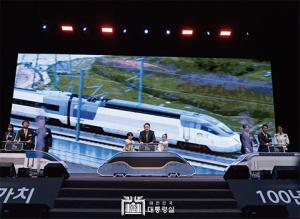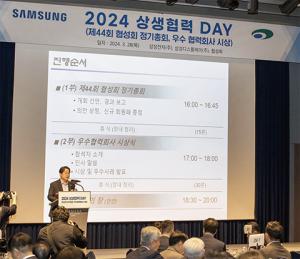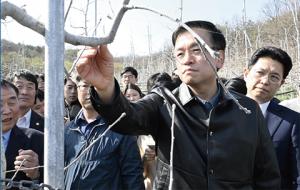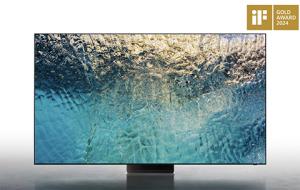 |
||
국내 유일의 고속인장시험기 개발, 세계와의 간격을 좁히다
사람들은 흔히 “과학의 발전이 인류의 삶을 이롭게 한다”고 말한다. 그러나 실제 우리의 생활 안에 무수히 많은 첨단 과학기술들이 반영되어 있다는 사실을 아는 이는 그리 많지 않다. 일례로 우리가 매일 이용하는 자동차 안에도 수많은 역학 원리와 그에 따른 첨단 설계 공법이 적용되고 있다. KAIST 전산역학설계연구실의 허 훈 교수는 소성가공 분야와 충돌해석 분야에서 국내·외를 통틀어 내로라하는 전문가로서 ‘사람에게 유익한 가치창조공학’, ‘사회에 실질적인 이익을 제공하는 연구’를 구현하고자 노력하고 있는 인물이다.
허 훈 교수가 이끌고 있는 전산역학설계연구실은 공학시스템에서의 고신뢰성 역학 및 설계문제를 컴퓨터 응용해석을 통해 분석·평가하고 있다. 실제 실험으로는 수행하기 어렵거나, 상당한 비용과 시간이 소요되어야 하는 연구를 VR, VE, CAE 등의 컴퓨터 시뮬레이션을 통해 수행함으로써 보다 신속하게 결과를 도출해 내고, 이를 실질적으로 응용효과가 발휘되는 데이터로 전환하는 연구를 수행하고 있는 것이다. 이를 위하여 연구실에서는 이미 20년 전에 2억여 원을 투자하여 재료의 고속물성치를 측정하는 ‘고속인장시험기’를 국내에서 최초로 자체 개발하였다. 국내 대학 중 유일하게 고속물성데이터를 생산할 수 있는 곳인 전산역학설계연구실은 이러한 공로를 인정받아 지난 2010년 지식경제부 고시 ‘국가참조표준 고속물성데이터센터’로 지정된 바 있다. 허 교수는 “해외에서 개발된 고속인장시험기 완제품을 구입할 경우 8억 원 이상의 예산이 필요합니다. 이 같은 거액의 예산을 투자하기 어려운 대부분의 국내 대학 연구실에서는 실험장비 구비가 어려운 것이 현실이며, 혹은 예산지원이 가능하더라도 투입 즉시 가시적인 성과창출이 가능한 다른 부분에 예산을 돌리고 맙니다”라며 안타까움을 토로했다. 전 세계적으로 중고속 변형률속도에서의 재료물성 데이터에 관한 불확도를 정확히 계산하는 기법을 개발하여 참조표준화하고 있는 기관은 허 훈 교수가 관장하고 있는 국가참조표준 고속물성데이터센터가 유일하다. 불확도의 정확한 산출기법으로 중고속 변형률속도에서의 재료물성 데이터의 오차범위를 정확히 예측하고, 컴퓨터 시뮬레이션의 신뢰도를 향상시킬 수 있는 것이 전 세계의 연구자들의 연구내용과 차별화되는 점이라고 강조하고 있다. 다양한 산업분야에 활용될 수 있는 고속물성에 관한 표준데이터를 축적하는 일이 산업기술 발전에 꼭 필요하지만, 산업체와 대학에서 이를 외면하고 있다는 지적이다.
“산업체에 실질적인 도움이 되는 연구가 필요해”
이에 연구실의 고속물성데이터센터에서는 자동차를 비롯한 고속운송기구, 전자재료 및 구조재료의 고속인장 물성치와 성형한계에 대한 국가참조표준데이터를 생산하고 있다. 센터에서는 자동차용 강판 및 구조용 강재, 비철금속재료 50종 290여 건의 데이터를 인증참조표준, 39종 190여 건을 유효참조표준화하여 관련 기업체, 연구소 및 학계에 보급하고 있다. 뿐만 아니라 각 산업체에서 필요로 하는 강재, 고분자 복합재료, 알루미늄 합금 등 64종 340여 건의 고속물성 데이터를 생산하여 보급에 힘쓰고 있으며, 이러한 데이터를 센터 홈페이지에 공개하여 실험을 의뢰할 여력이 안 되는 기업이 언제라도 손쉽게 필요한 정보를 열람할 수 있도록 배려하고 있다.
허 교수는 대학 교수로서 해야 할 역할을 ‘교육·연구·봉사’로 꼽았다. 그는 “현장감 있는 교육을 통하여 산업체가 요구하는 우수한 전문 인재들을 길러내고, 산업체에 실질적인 도움을 줄 수 있는 연구를 수행해야 합니다. 이러한 노력은 결과적으로 산업 전반의 발전과 국가 경쟁력의 향상으로 이어지리라 믿습니다”라고 밝혔다. 특히, 연구만을 위한 연구에 그치기보다는 기업의 기술혁신과 세계 선진기술을 견인할 수 있는 실용적인 연구가 더욱 필요하다고 강조했다. 산업체관련 연구로 자동차의 충돌해석 및 부품의 고속성형에 결정적으로 기여하였으며, 해양구조물용 강판의 고속물성, 선박의 충돌구조해석 기술, 전력발전 터빈의 고속물성, 전자제품의 고속물성 등 철강재, 고분자복합재, 발전용 등의 비철금속, 디스플레이용 유리재료 등 180여종의 고속물성을 생산하고 데이터베이스를 구축하여 관련 산업에 보급하고 있다. 또한, 고속열차의 에너지흡수 충돌안전장치의 설계에 결정적인 인장볼트, 전단볼트, 확관 에너지흡수부품 등의 고속물성을 확보하여 충돌 안전장치의 설계에 결정적인 기여를 하였다. 핵폐기물용기의 충돌안전 및 충돌 에너지흡수 설계를 위하여 해당 부품의 고속물성치 측정 및 용기의 충돌성능 시험을 수행하여 핵폐기물용기의 설계에 기여하였다. 군사용 탄두의 고속물성 및 파단물성모델 개발에 참여하여 고속에서의 구조재의 정확한 응력-변형률 선도와 파단물성을 확보하여 침투탄, 관통탄 등의 탄두개발에 기여하였다. 우리나라가 세계를 선도하는 과학강국으로 성장하기 위해서는 정부의 지속적인 지원과 관심, 그리고 연구체계 및 연구비책정 기준의 개선이 필요하다고 당부의 말을 남겼다.
한국소성가공학회 회장과 한국자동차공학회 부회장을 역임한 바 있는 허 훈 교수는 한국자동차공학회 영문논문지 International Journal of Automotive Technology를 창간하여 13년간 편집인과 편집장으로 봉사하였다. 현재까지 230여 편의 학술논문을 게재했으며, 국내·외 학술대회에서 430편의 논문을 발표하였다. 또한 2013년에는 전 세계에서 발표된 공학 관련 논문 중 International Journal of Solids and Structures에서 유료다운로드 1위에 랭크될 정도로 연구역량과 보유한 기술력을 인정받고 있기도 하다. 지금 이 순간에도 멈추지 않고 있는 그의 도전이 세계 수준을 넘어 미래를 선도할 기술 강국으로 나아갈 대한민국의 밑거름이 되어주길 바란다.
Prof. Huh Hoon of KAIST Computational Solid Mechanics and Design Lab.
Taking value creation for human, Industries and future
Korea’s first ‘High Strain Rate Tester’ narrows down the gap of the world
The term ‘science’ in our daily life can be rather obscure as most of us take it for granted. Subway or vehicle takes us where we wish to be in the morning during which we scroll up and down our smart phones and get off at the destination and turn on the computer or machine or whatever that needs to be powered for us to start a day. In all of these shifts and movements, there is science and engineering in it. Prof. Huh Hoon of KAIST Computational Solid Mechanics and Design Lab. is one of the most acclaimed authorities of world in the ‘Plasticity’ and the ‘impact simulation’. And ‘human-centered value creation engineering’ and ‘practical research toward human welfare’ always have been two core challenges that drove his passion.
Prof. Huh and his team use ‘Computer Aided Simulation’ to analyze and assess the issues of the high reliable mechanics and design in the engineering system. The team draw fast results through computer simulations such as VR, VE and CAE, which are almost impossible in real tests requiring tremendous amounts of time and cost. The results from the computer simulations are turned into the useful data that can bring substantial application effect. For that purpose, Prof. Huh developed Korea’s first ‘High Strain Rate Tester’ that measures ‘high speed mechanical properties’ 20 years ago at the investment of around 200 million won ($200,000). And the KAIST Computational Solid Mechanics and Design Lab. became the only place in Korea that can produce ‘high speed mechanical properties data’. In recognition of this achievement, the KAIST Computational Solid Mechanics and Design Lab. was designated as the ‘High Speed Mechanical Properties Data Center’ of the National Center for Standard Reference Data by the Ministry of Trade, Industry and Energy in 2010. “It costs more than 800 million won to purchase a complete set of high strain rate tester from overseas and this is a considerable amount for a university to afford. Even if it was afforded, it would be invested to other equipment which draw immediate substantial results.” In fact, Prof. Huh developed the methodology to precisely calculate the uncertainty of measurement on the material properties at the intermediate and high strain rates and standardized the method for the first time in the world. The uncertainty measurement of the material properties enables engineers to predict the deviation of the material properties and thus to enhance the reliability of the computer simulation. This is one of the must-necessary methods for the development of industrial technologies, but industries and universities in Korea rather seem to underestimate and ignore, some say.
Ceaseless efforts in bringing substantial results to industries
To improve the situation, the High Speed Mechanical Properties Data Center produces national reference standard data of the high speed material properties on vehicle, high speed transportation, electronic materials and structure materials. Currently, 290 cases of 50 kinds of certified standard reference data and 190 cases of 39 kinds of validated standard reference data for steel sheets, structural steels and nonferrous materials are uploaded for dissemination to industries, universities and research institutions as reference. The center also produced 340 cases of 64 kinds of high speed mechanical properties data for structural steels, polymer composite materials and aluminum alloys, all of which are open to industries and research institutes on the center’s homepage. “I think the role of professor is fostering talented manpower and doing researches that can bring substantial results to the industries. And the talents and the results naturally lead to the development of the industries’ capability and the enhancement of Korea’s superiority to other countries.” The contribution Prof. Huh has made, in relation to high speed material properties, are vast with around 180 materials and to name a few: car crash analysis; high speed metal forming; high speed mechanical properties on offshore construction, power turbines, electronics; energy absorbing device in high speed train with tension bolts, shear bolt, expansion tubes; nuclear waste container; and various kinds of warheads. Meanwhile, Prof. Huh served as the president of the Korean Society for Technology of Plasticity and the vice president of the Korean Society of Automotive Engineers. He also worked as the editor and the editor-in-chief of the International Journal of Automotive Technology for the last 13 years. The number of research papers published accounts to 230 and the number of papers presented at various conferences home and abroad is about 430. In 2013, one of Prof. Huh’s articles was ranked as the first for number of paid downloading in the International Journal of Solids and Structures, which is also called as ‘Top hottest Articles’. Prof. Huh names ‘education, research and service’ as the three core elements he always keeps in his mind as a professor, scholar and engineer. <Power Korea> sends a message of support.
임승민 기자 press0105@naver.com







